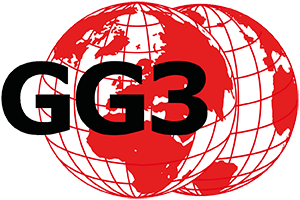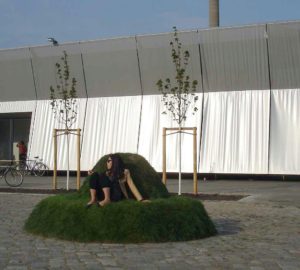Exhibition TRANSFORMATION
The international artists take a stand on this complex topic in the exhibition “Transformation” in various ways with 13 works of art. The artist Tom Albrecht, thematically points in his object to the urgent switch to renewable energies. Jana Charl also wants to stimulate a rethinking of using other energy sources with her artistic work made of collected materials.
Mariel Gottwick ‘s photographs document a transformation of an “automotive species” that becomes part of the landscape through the action of nature itself. Here, however, the curious and unimaginable is that this means of transportation will rather belong to a dying species in the future. Petra Lehnardt-Olm also works with the medium of photography and addresses the contrast to the old Wilhelminian industry with the electric car, in that the old is reflected in the new. But what comes after that? Also in Stephan Groß ‘s collage you can see a van involved in a traffic accident. Here, he builds a figurative connection with a university event that references essays written by British economist E.F. Schumacher in the 1970s and suggests how “bigger is better” thinking might be changed. Maria Korporal also refers to literature by taking up the sentence “Whoever wants the world to remain as it is, does not want it to remain” by the Austrian poet Erich Fried and integrating it into her video art. In doing so, she specifically addresses the change that humanity must make in order to stop the advancing climate crisis.
The participatory project and sustainable fashion label STREETWARE saved item implements the exhibition theme in an installation. They stage their collected clothing from the streets of Berlin and make their street shopping experience with a clothes horse and second-hand clothing draped on it. In this way, they combine new fashions in sustainability with questions about (their own) identity. Alexa Helbig-Tewes also works in relation to space. With about 1000 mushrooms, it fills the ground, addressing a collective trauma of destruction, which should gradually heal. The work of the artist María X. Fernández is a legal encyclopedia that confronts human law with natural law, which finally absorbs it and transforms it into a fragment of a petrified tribe. Jila Svicevic also wants to give something to the collective well-being by adding a sculpture to the environment as a seed bomb with an artistic workshop with guests to positively impact ecosystems and promote sustainability. The artists Marina Resende + Graham Livingston install a garden bed in the exhibition space, which at the same time is supposed to offset the CO2 product of a server standing next to it and asks questions about politics and economy.
For the video artist duo Lilia Limiyan and Katherina Sadovsky, the transformation of the world has already progressed so far that there is nothing left but for man to form physical transformations in order to survive in the future. Now the posthuman determines the world. But to prevent this scenario from happening, the two artists Tom Albrecht and Stephan Groß will perform a speech and sound performance at the opening of the exhibition “Transformation”, according to which people should “get off their asses” and move forward to a sustainable transformation.
TRANSFORMATION to the Good Life
Group Global 3000 will show two visible visions in 2022 in the exhibitions “Transformation” and “The Good Life”. We start 1.4.-20.5.2022 with the exhibition “Transformation” after an international tender.
The euphoria regarding technical progress is over. We see that unlimited growth does not fit a limited earth. We are already experiencing the first answers. The dream of endless growth is coming to an end and at best leads to transformation.
By transformation, we mean the process that leads globally to a good life for people and sustainable use of natural resources. We see social and cultural change as feasible, because we have the economic, technical and scientific prerequisites. But this life is difficult to imagine for most people. Convention versus transformation.
We want to illustrate the image of the good life in the future. A framework has been drawn up by economists and natural scientists: Sufficiency reduces production and consumption, efficiency makes more productive use of materials and energy, and consistency involves nature-friendly material cycles, recycling and waste avoidance. The value of nature appears in the economic accounts. The gap between rich and poor is being closed. The economy is transforming into a post-growth economy. We live grandchild-friendly.
The pictorial vision of social change and a sustainable and good life, gives strength for the way there. Thus, the transformation is also an aesthetic project. The necessary changes require the creativity of the entire society. The potential of art lies precisely in opening up new spaces for thought and making transformation imaginable.

